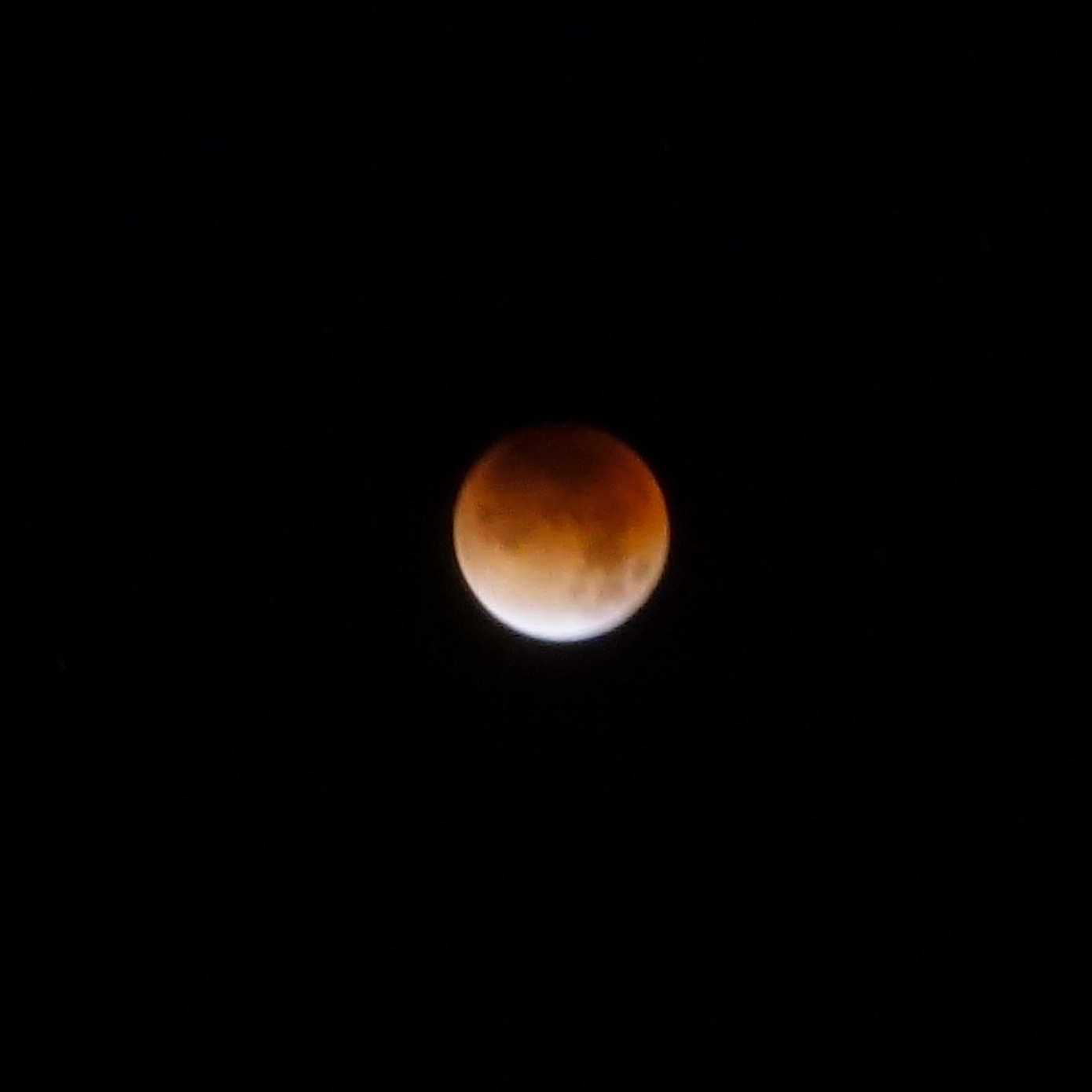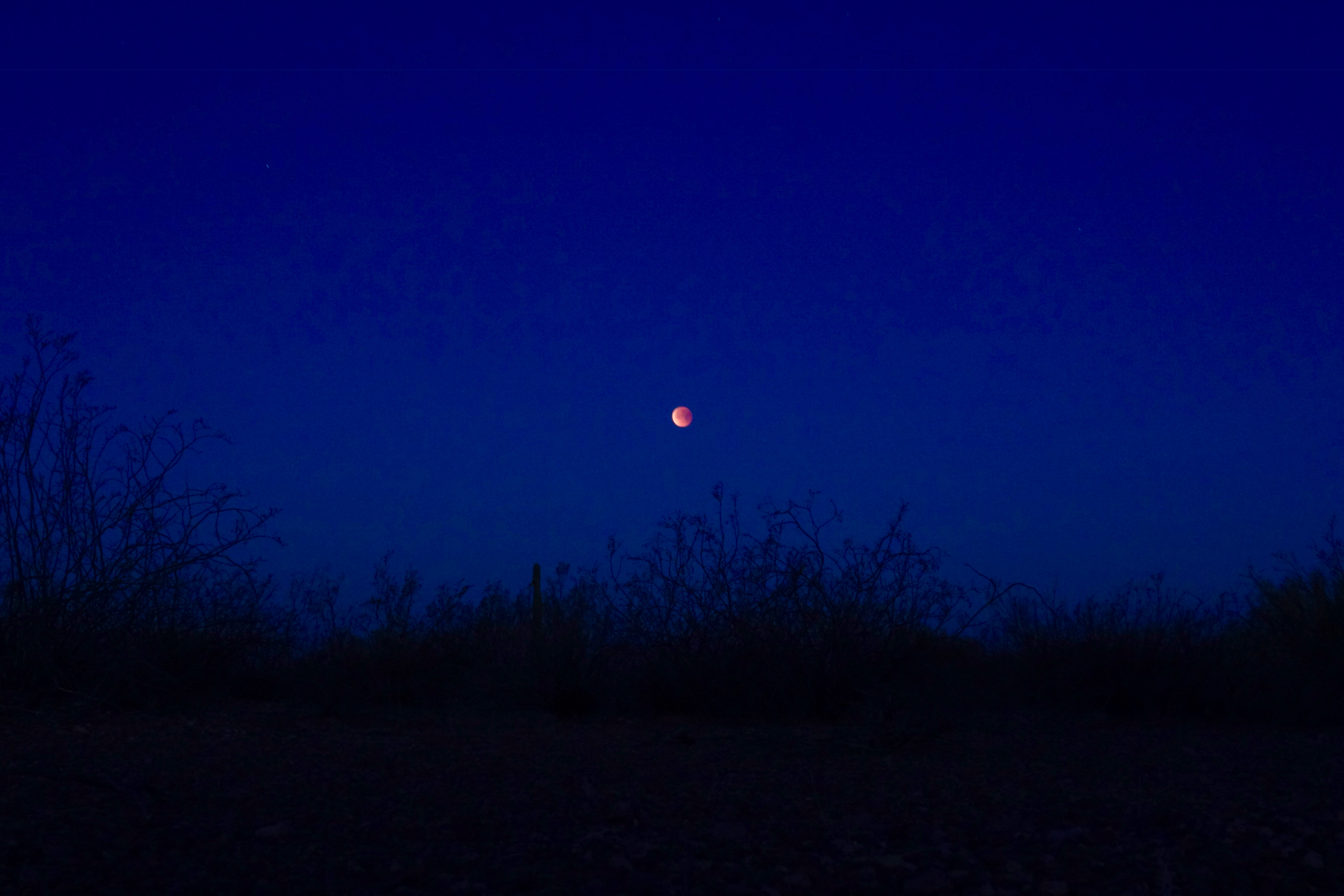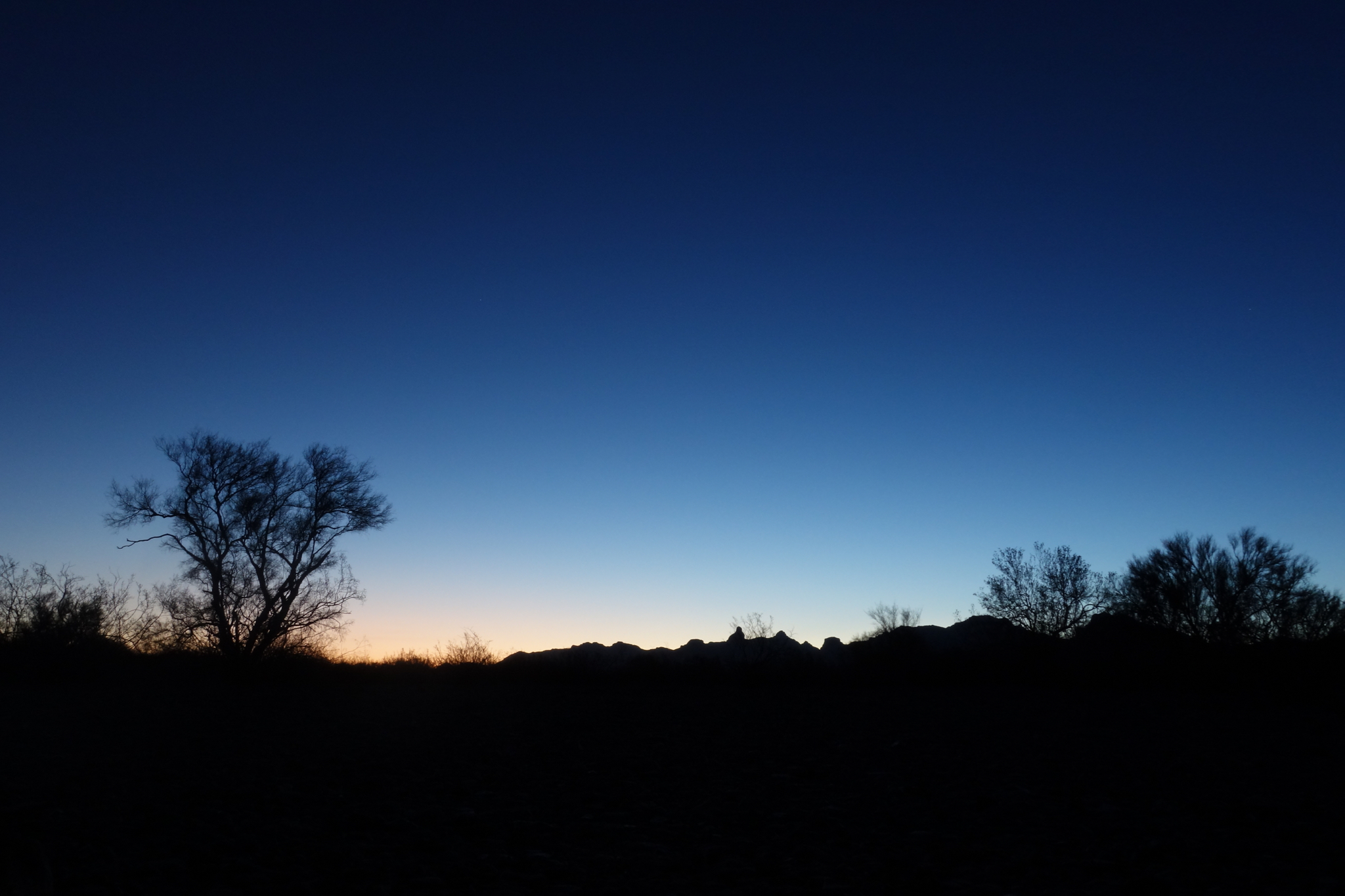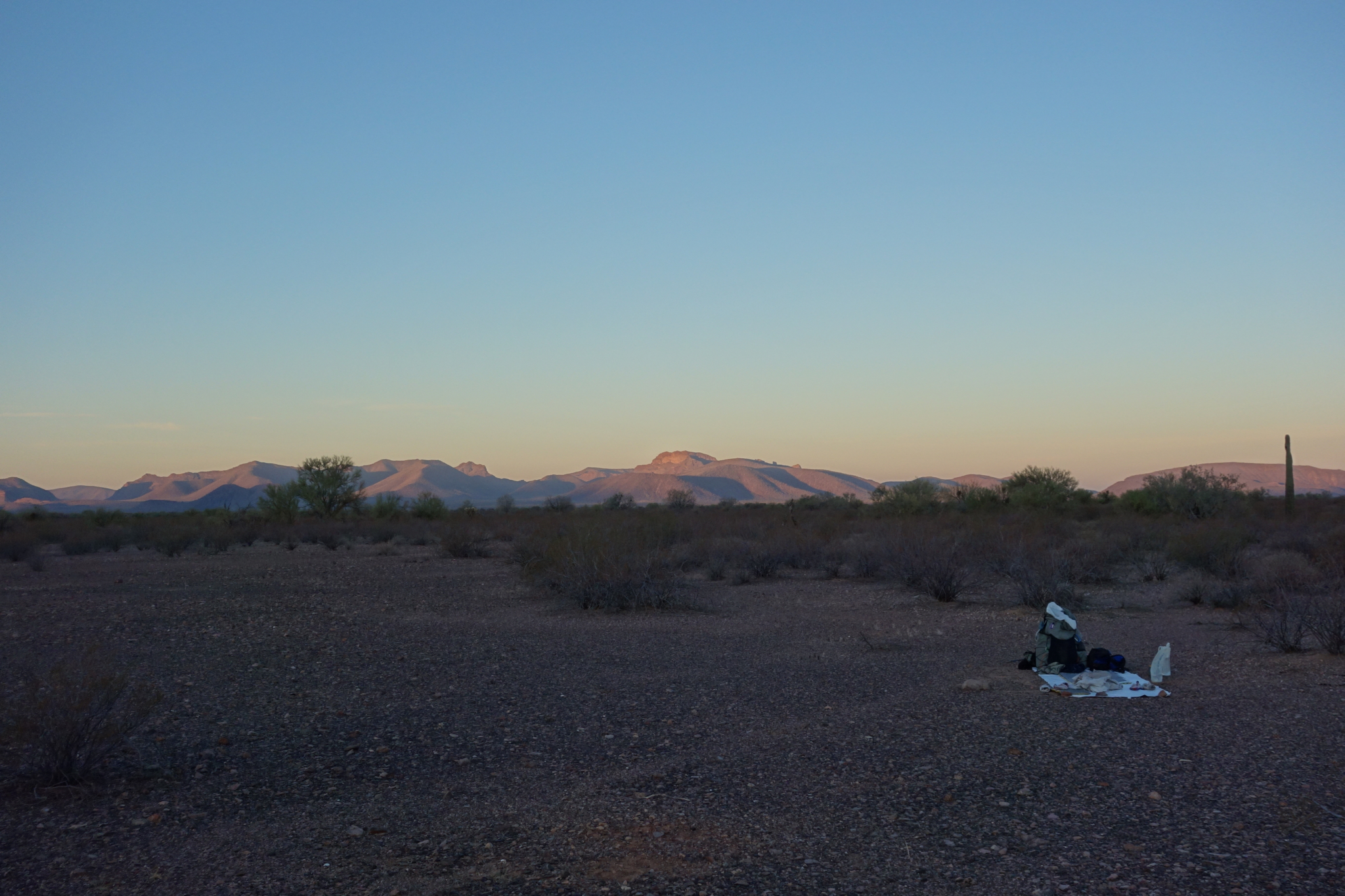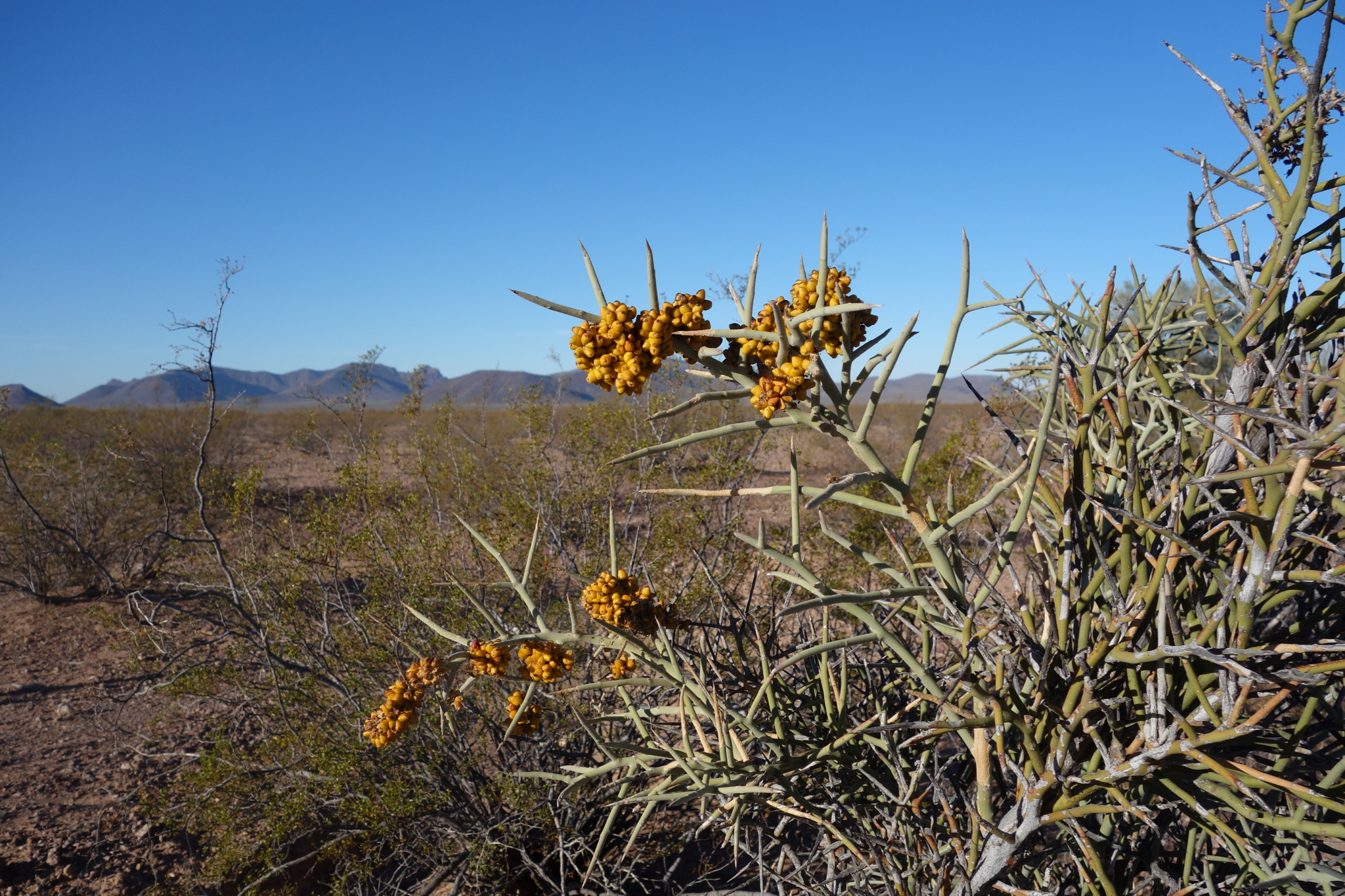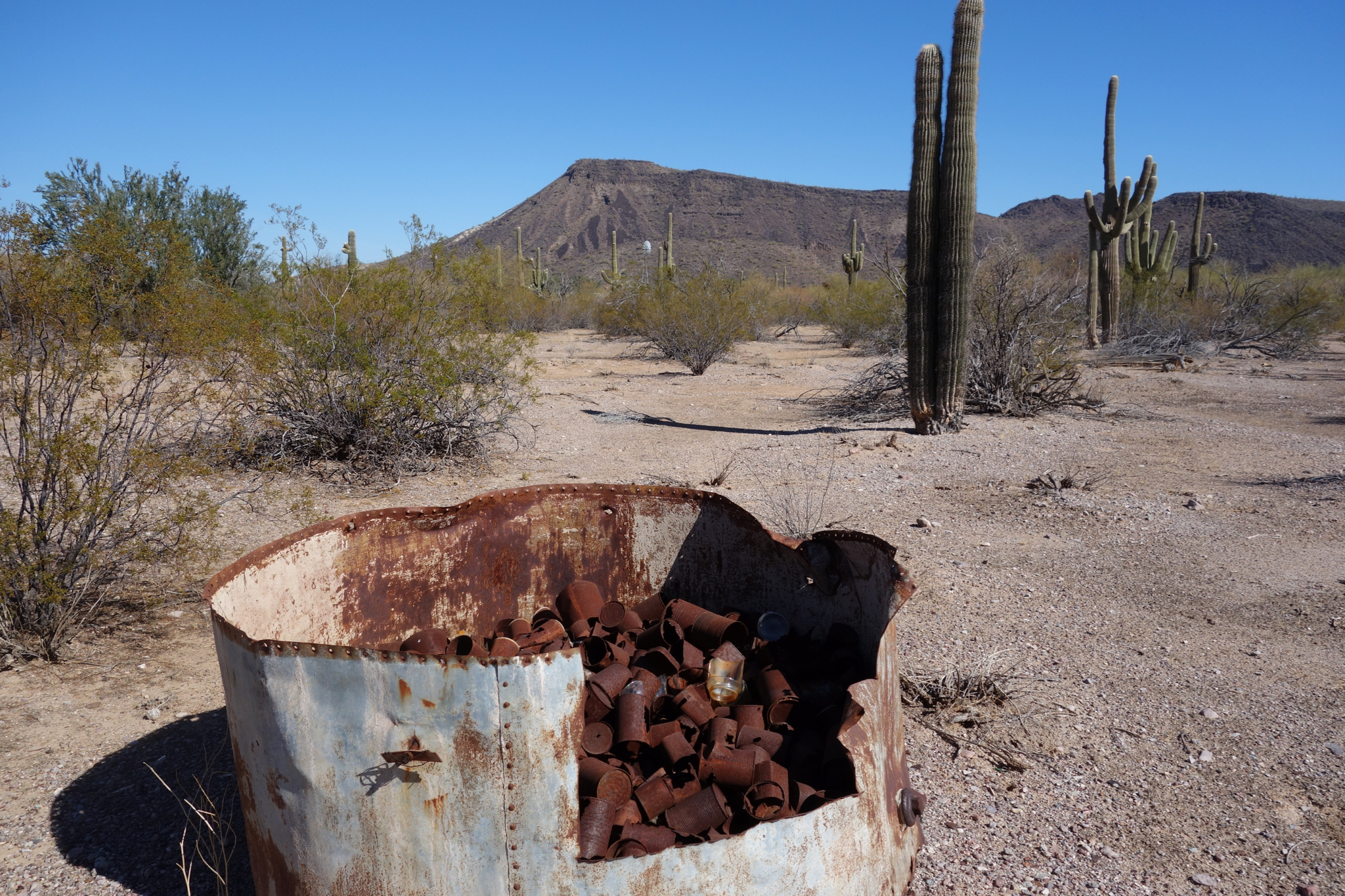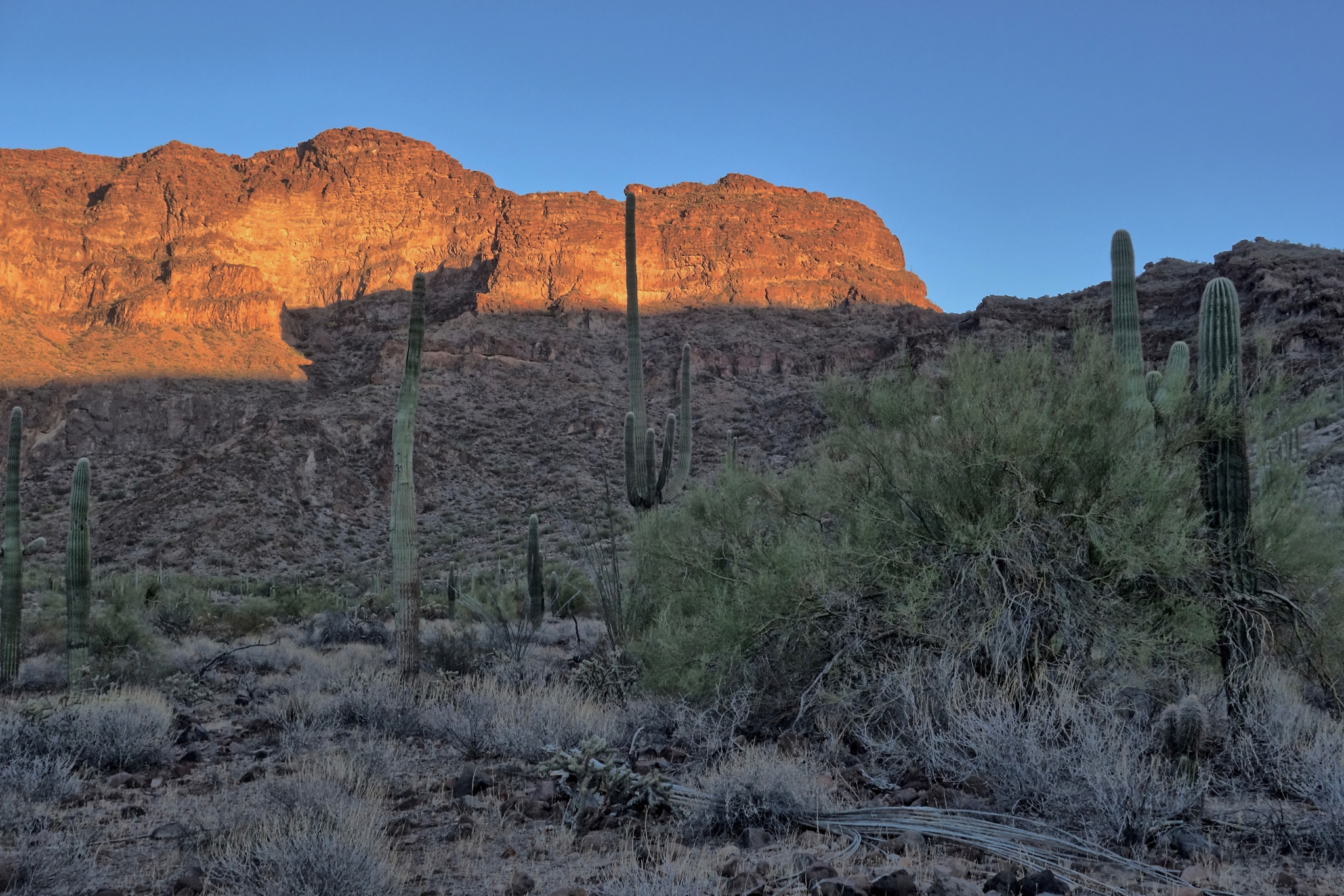The skies cleared and the views of the early morning eclipse were spectacular.
Right on cue, a pair of coyotes began howling just as totality began.
My focus on the moon was disrupted by a light flashing on and off every five seconds in a wash about a quarter mile south. I stopped taking pictures of the moon for a while, not wanting the light of my viewfinder or beep of the timer to give my presence away.
The flashing light continued for half an hour until it was answered by a second light a bit further down the wash. After that I saw no more night walkers in the desert.
Today’s walk was a continuation of yesterday’s trash trail. Fewer tuna packets but more black jugs. Most of the jugs were cut in half or otherwise shaped as funnels, scoops and dispensers of various kinds.
The walk started with about 6 miles of easy striding across the desert pavement of Ajo Valley. Low creosotes are the predominant form of vegetation, widely spaced. I had the sun at my back, lighting up the spires of the Bates Range in front of me. A trail would have been of no use.
Saw the tracks of the coyotes that were howling last night, and also flushed a deer. I didn’t get a good look at it, but it didn’t appear to be either a muley or a whitetail. Probably some local species. These animals imply water within ten miles or so, but I can’t imagine where that water is. Alamo Canyon was the most likely source and it was bone dry other than a few damp spots under pouroffs.
There were few lizards and no snakes. I found a number of shells of giant desert millipedes under creosote bushes.
Also found a few specimens of this shrub with spectacularly large thorns. I only saw a few of them, and I don’t know what they are.
Passed through the range via Growler Canyon. It was less interesting and more trash-strewn than I had hoped. The wash itself is used as a highway by off-road vehicles – some combination of ATVers, smugglers and Border Patrol no doubt – and is a mass of churned gravel. I found the 6 liters of water I had stashed at Bates Ranch and looped around the backside of the range, heading south through volcanic terrain filled with organ pipes, saguaros and palos verdes. And historic trash to complement the contemporary trash.
Made good time to the wash below the saddle that I’ll use to cross back over the Bates Range. Judging from the number of socks and black jugs on the route, this saddle is also a popular migrant trail. Not wanting to encounter more night walkers, I found a discreet side valley to camp in and was rewarded by an excellent sunset view of Kino Peak above.
Update: the deer-like creature I saw was most likely a Sonoran Pronghorn. The fact that it was running and not bounding like a deer makes me pretty sure this is correct. There are maybe a hundred of these beautiful creatures left in the US, I was lucky to get a glimpse.
Update #2: via iNaturalist, the mystery shrub appears to be Emory’s Crucifixion Thorn, a fairly rare plant endemic to the Mojave and Sonoran deserts.


